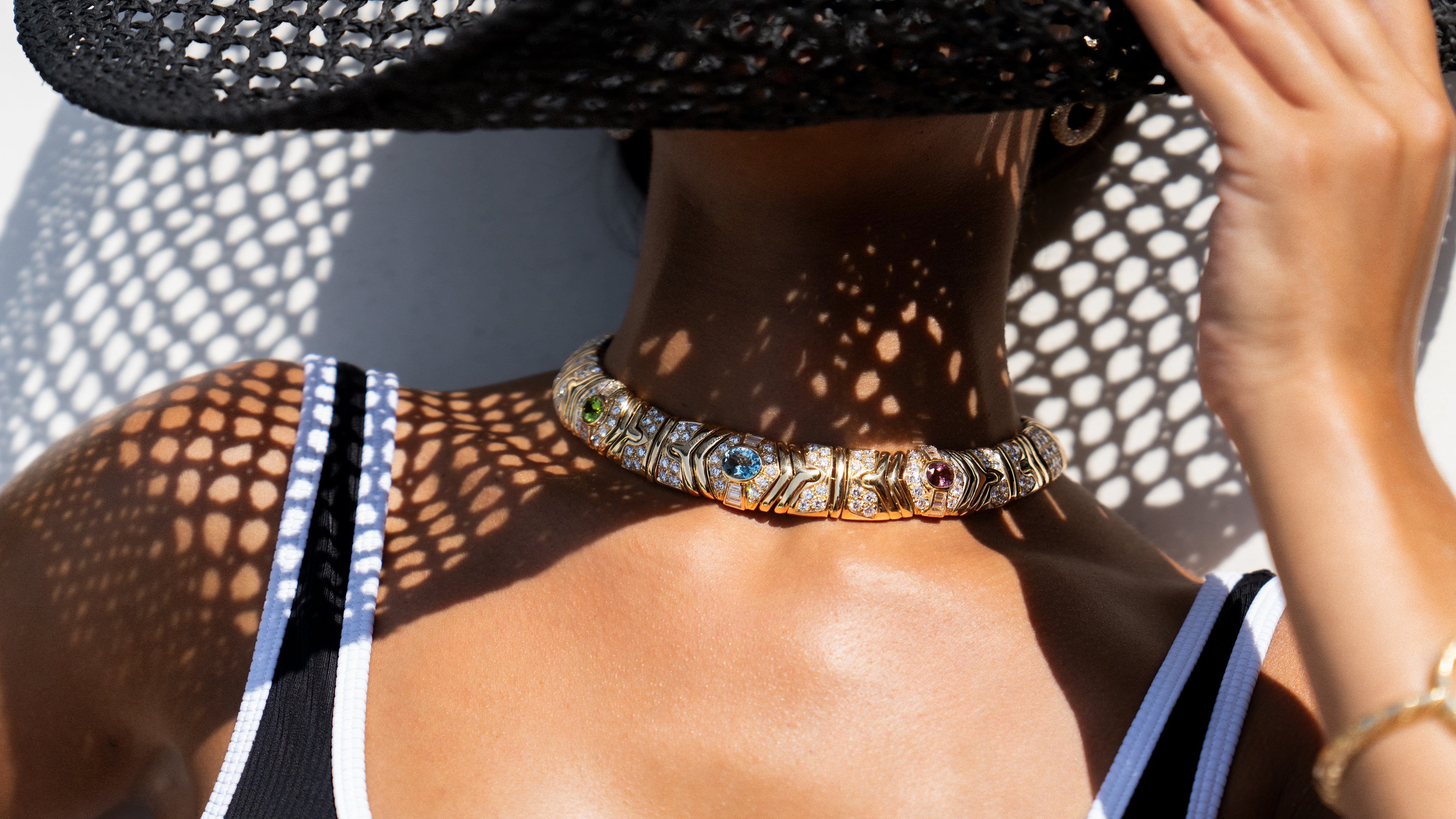Georges Fouquet
Master of both Art Nouveau and Art Deco, Georges Fouquet brilliantly took his father’s Maison into the 20th Century, infused with a passion for pursuing all things new.
Like Father, Like Son
In 1860, Alphonse Fouquet set up his business in a shop in Paris, showcasing fine quality jewelry that dovetailed with the fashions at the time. He was a success, exporting his pieces to other countries. His future was sealed with the designs he showcased at the 1878 Exposition Universelle.
Two years later, 18-year-old Georges joined the Maison, learning the craft and the business from his father. The Art Nouveau movement was gaining in popularity at that time, and Georges was at the forefront, deeply influenced by its aesthetic.
Collaborating with Mucha
Georges’ first collection, presented in 1898, featured orchids and butterflies decorated in jewels and embracing the Art Nouveau style. Typically set in gold, his pieces were embellished with enamel and decorated with opals, horn, pearls, and, occasionally, diamonds. Georges, in keeping with the Art Nouveau motifs, employed curvaceous lines, muted-colored enamels, and subtle textures.
He truly hit his stride by the time the 1900 Exposition Universelle arrived, and his display was breathtaking, its success enriched by his now-legendary collaboration with the artist Alphonse Mucha. Many of the pieces for the Exposition, including the display cabinet in which they were housed, reflected Mucha’s talents. The jewels envisioned by Mucha, while praised for their originality, were often unwearable due to their size and heft.
Sarah Bernhardt introduced the pair, asking Fouquet to create a bracelet for her from a drawing by Mucha, so the story goes! The jeweler and the artist collaborated on a variety of Art Nouveau jewels. Their partnership thrived for three years.
A New Era
By 1910, Art Nouveau was on the way out. Fashions were changing, with necklaces getting longer and earrings and headbands becoming the rage. In 1912, Fouquet was creating hair ornaments sparkling with diamonds and embellished with feathers. A decade later, the trend to bobbed haircuts would require a shift to jeweled bandeaus, which were worn straight across the forehead.
With the arrival of the Art Deco movement in the 1920s, Georges, always on the cutting edge, took his jewelry to a bolder, more geometric look. Black onyx and diamonds were a favorite pairing, and his influences came from places as far removed as Africa and the Far East.
Georges Fouquet was president of the jewelry group at the 1925 Exposition Internationale des Arts Décoratifs. To prepare for the event, Fouquet encouraged his contemporaries to take a new approach and show “only pieces of genuine originality, drawing on new sources of inspiration.” Many believed changing styles were needed to leave behind the swagger and pretense of the traditional motifs embraced by royalty.
Georges’ son, Jean, his successor in the family business, displayed his own unique pieces at the Exposition, alongside those of his father and the Maison’s leading craftsman, Louis Fertey. Pieces designed by other artists were in the display, such as poster artist Adolphe Mouron (known as Cassandre).
Jean Fouquet went on to be an innovator of the Art Moderne style, carrying on his father’s tradition of staying one step ahead of emerging trends.
The Maison closed up shop in 1936, following the devastating economic conditions created by the 1929 stock market crash. One of Fouquet’s final acts was to commission designs from the sculptor Lambert-Rucki.
Georges passed away in 1957.
Exhibits
Alphonse Mucha designed a new shop for Maison Fouquet at the turn of the Century, located at 6 Rue Royale in Paris. The shop created quite a sensation at the time, raising it to a level of art that beautifully complemented the creative jewels produced by Georges Fouquet. A re-creation of the interior of the shop is on display at the Carnavalet Museum in Paris.
Other museums that house works by Georges Fouquet include New York’s Metropolitan Museum of Art, the Victoria and Albert Museum in London, and the Petit Palais in Paris.
Notable Clientele
Georges Fouquet produced jewels for several French actresses, most famously for Sarah Bernhardt. Fouquet and Mucha created a snake bracelet for Bernhardt that she wore for the Médéé poster shoot.
Georges as Author
Fouquet wrote several articles and books about modern jewelry, including his publication, La Bijouterie, la Joaillerie, la Bijouterie Fantaisie au XXc Siécle, which produced this quote:
The jewels most likely to endure are not ostentatious displays, but those in which the metal is associated with raw materials of a financial value less than their beauty, like aquamarine, amethyst, topaz, or tourmaline. Art, which never ages, will prolong the career of these jewels. It will endow them with their true character. They will never be disassembled so that the materials can be used in a different form. They are, first of all, works of art rather than financial investments. – Georges Fouquet
